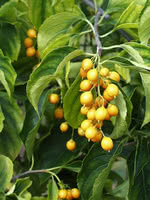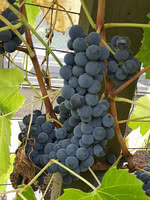Mon-Fri 9am - 5pm Mountain time
American Bittersweet vs F130 Grape
Celastrus scandens
Vitis F130
NOT AVAILABLE THIS SEASON - MIGHT RETURN
NOT AVAILABLE THIS SEASON - MIGHT RETURN
American Bittersweet is a deciduous, woody, perennial vine with striking orange to yellow berries that persist into winter. Indigenous to North America, this vine has become so rare it is now considered a protected species.
Excellent for naturalization projects, American Bittersweet attracts birds and other wildlife. Please keep in mind that the plant is toxic to humans and should not be ingested. To ensure the attractive berries are produced, cross-pollination between a male and female plant must occur.
This variety is cold-hardy and will produce bluish red clusters of grapes that are great for jellies and juice. Grapes have long been used to cover arbors and trellises.
Grapes are a higher maintenance species requiring regular care and pruning. Unchecked and uncared for grapes can spread, be eaten by birds, and have lesser yields.
Applying a thick layer of mulch can help these vines overwinter better.
Note: We do not ship grape vines to BC due to regulatory restrictions from the Canadian Food Inspection Agency.
American Bittersweet Quick Facts
F130 Grape Quick Facts
Toxicity: All parts of plant are toxic to humans

